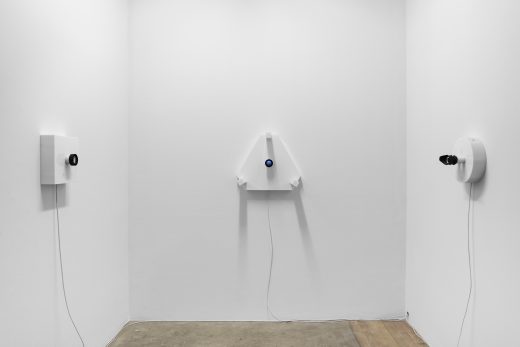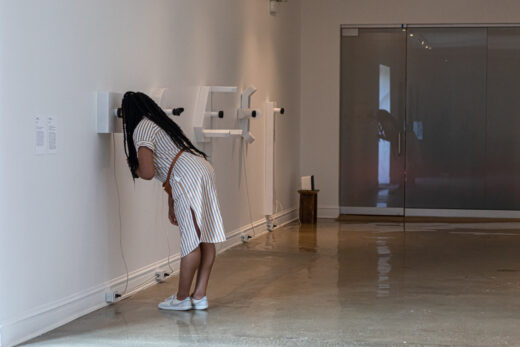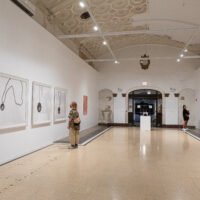Gary Hill

Gary Hill was one of the first artists to use video technology to do something other than straight recording, and he continues to be an innovator today. During his forty-plus-year career, he has moved well beyond the narrow confines of video into experimental interactive technologies. All of his explorations of myriad novel electronic media, however diverse, are deployed as means to investigate the relationship between mind and body, perception and cognition, language and consciousness.
Hill’s earliest work, made in the late 1960s, was metal sculpture. Fascinated more by the sounds the metal could produce than by its appearance, he began to extend his practice to electronic sound, sound synthesizers, video cameras, and eventually to interactive installations. He deconstructed his works as he made them, both literally and figuratively: literally, because we can see wires, cathode tubes, the guts of technology; and figuratively, because he relentlessly probes the tenuous and glitchy nature of the self. In a 2009 interview, Hill said that, in retrospect, he was surprised how often his use of the video camera has nothing to do with looking through the eyepiece. “I’ve attached it to my body, where it becomes a physical extension or its own entity in space. I’ve used the camera with machine movement to cancel out movement. I’ve used it as a pendulum. A circuit. And then there are virtual cameras available in 3D programs that allow one to pass through objects as well as just about anything you can imagine.”
Hill was one of the earliest adopters of computer technologies in the ’90s, leaving behind single-channel video as he had metal sculpture, but his commitment to investigate the structure of consciousness, and especially language, only deepened. All of his technical innovation would mean little without its parallel interrogation of the nature of the self. The work is rigorously informed by philosophers Ludwig Wittgenstein and Jacques Derrida and anthropologist Geoffrey Bateson. Hill writes: “I’m returning to and coming upon the root of language as a continuous process. I try to use this process to open up images too, beyond representation.”
Hill’s most recent work continues to probe for weak spots in his viewer’s conception of a unified self, even beyond language. A case in point is a work simply called Self ( ), included in this exhibition. Made in 2016, each of the five deceptively simple wall-mounted sculptures invites you to look into an eyepiece. As you do so, you get an unexpected view of part of your own body, captured by hidden cameras. Seeing your body deconstructed and presented serially as a kit of parts, rather than a unified whole, induces a sinister, uncanny feeling. Many of the artists included in Toward Common Cause take individual subjecthood as their prime topic of investigation, demanding recognition and claiming space for ways of being in the world beyond the default mode of white straight male in transformative ways. Hill’s work does this too, not through an exploration of race, gender, class, or sexuality, but through the fundamental mechanics of the mind.

